First, let's start off by listing the items required to hand-milk:
A goat in milk (obviously)
A stanchion w/ feeder
A milk stool
Some grain (we feed Purina Noble Goat)
Paper towels
10% Bleach water solution in a spray bottle
1 clean & sanitized milk bucket
Small cap or jar
1 gallon plastic bag (the twist tie kind, not the zipper kind)
Fight-Bac Teat Disinfectant Spray
How to milk:
First, lead the doe to the stanchion. Ours usually come out of the stall willingly and go to the stanchion on their own, and when we have more than one doe milking they will come to the gate to be milked, in the same order, everyday. Feed your doe grain in the stanchion so that she is occupied during milking. This creates a pleasant experience for the doe and is enough to make her want to come to the parlor to be milked the next time.
We line the milk bucket with the plastic bag. This makes everything easier to clean up while providing a sanitary vessel for storage and transport of the milk.
Note--The following pictures are a little awkward because I had to turn my hand toward the camera for demonstration. When milking, the backs of your hands should be parallel with the doe's inner thighs.
Stay tuned for next week's installment, "How to Trim Goat Hooves."

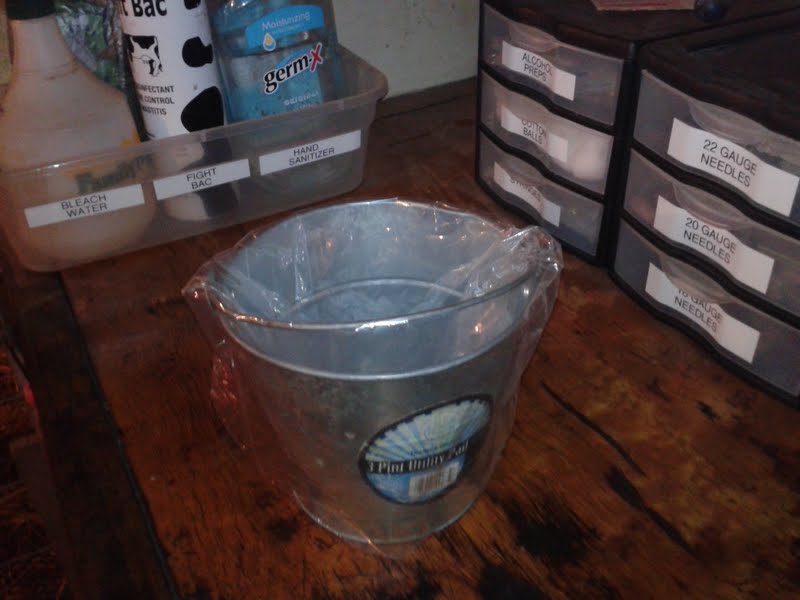
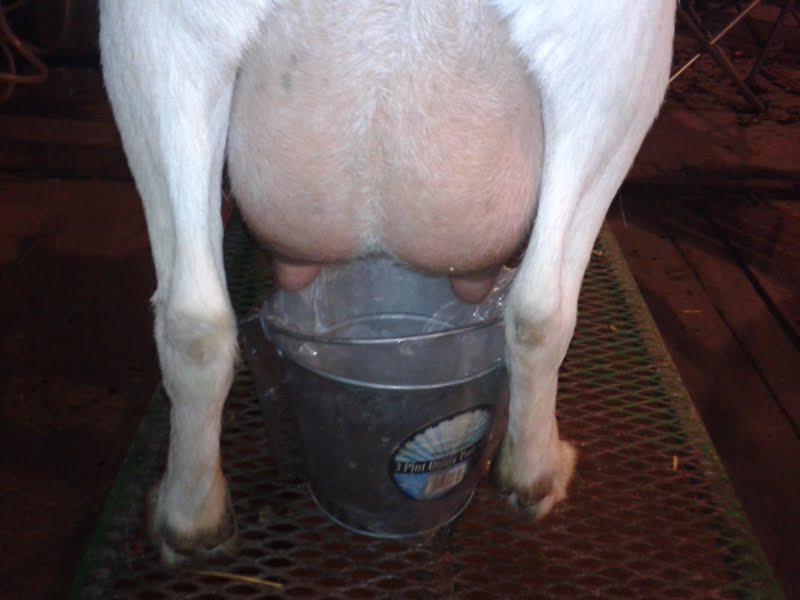
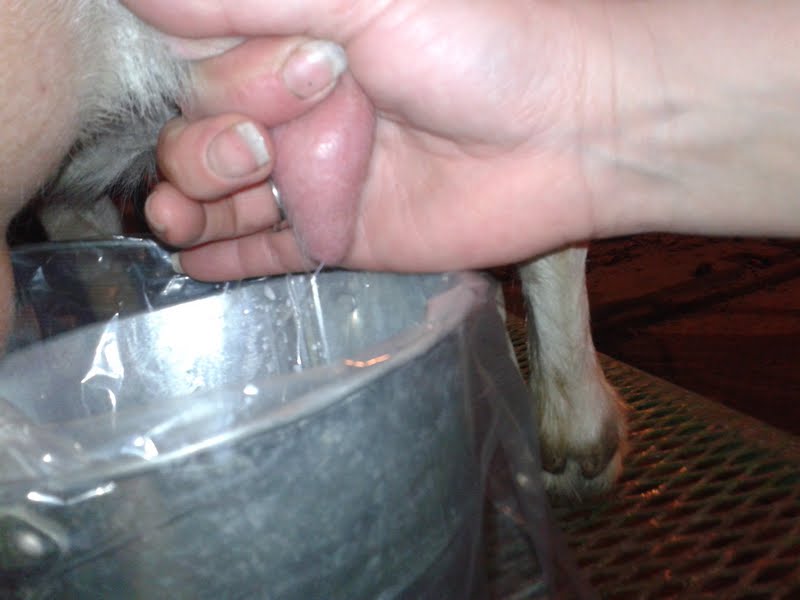
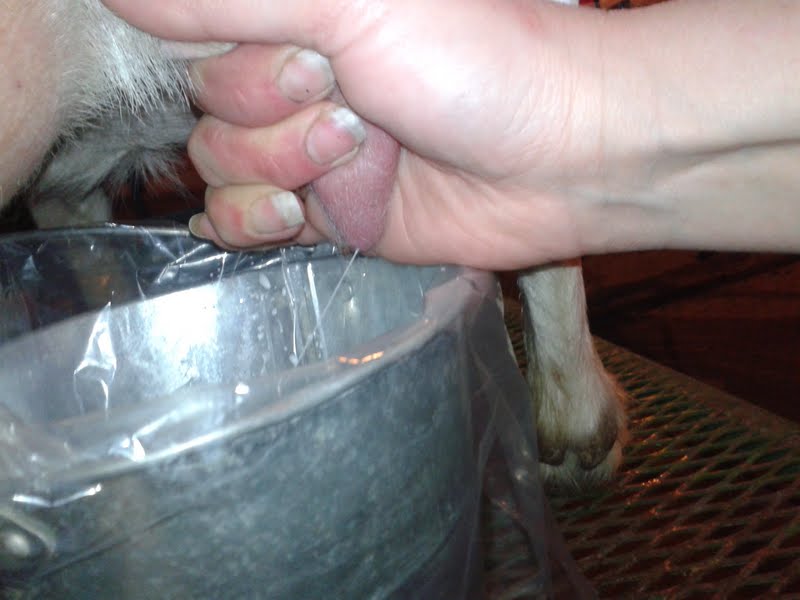

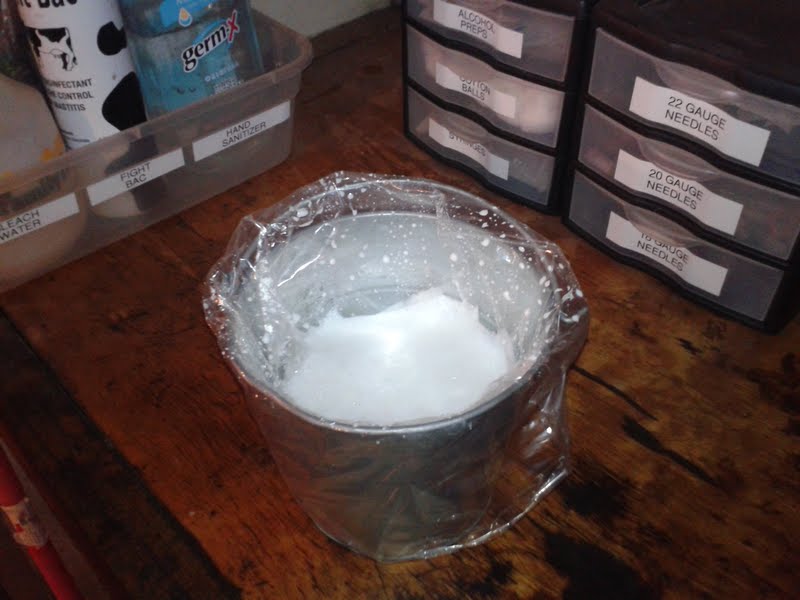

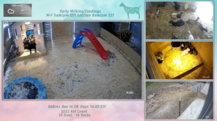




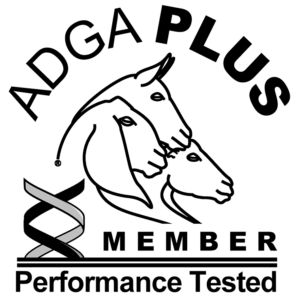
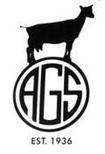




 RSS Feed
RSS Feed